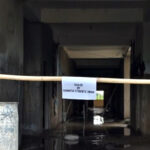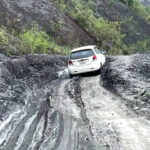The NLTP Act 1989 was enacted with the intention of addressing social issues related to alcohol abuse, such as domestic violence, health problems, drunken driving, and public disorders. By reducing alcohol consumption, the Act hoped to lower rates of alcohol related diseases, thereby improving overall community health. The Act aligns with the social and cultural values of certain communities in Nagaland that advocates for a lifestyle free from alcohol.
The ban on liquor, however, has reportedly led to a thriving black market. This growth of
illegal trade not only undermines the rule of law but also introduces unregulated, often dangerous, alcohol into the market. The prohibition has resulted in significant loss of potential revenue for the state government from liquor taxes, which could have been used for development projects. Enforcing the ban has been challenging, leading to allegations of corruption and inefficiency within law enforcement agencies.
Given the evolving social and economic landscape in Nagaland, there is growing support for lifting the NLTP Act. Lifting the prohibition could open up new economic opportunities for local businesses, including tourism, which could thrive with more liberal alcohol policies. This, in turn, could create jobs and boost the state economy.
Legalizing alcohol sales would allow the government to regulate the industry, ensuring safer consumption through quality control, quality assurance and reducing the consumption of illicit liquor, which poses serious health risk. Taxation on alcohol could generate significant revenue for the state, which could be redirected to improve infrastructure, healthcare, and education which are inevitable basic needs of the public.
Comparison of similar Acts implemented in other countries and their impact:
The US (Prohibition Era, 1920-33)
The United States experienced a similar experiment with the nationwide prohibition of alcohol, which led to a dramatic increase in organized crimes, illegal speakeasies (illegal establishments that sold alcoholic beverages during the Prohibition Era in the US), and black markets for alcohol. Eventually, the prohibition was lifted due to its negative impact on society and economy.
India (Gujarat state)
In India, Gujarat remains a “dry state,” where alcohol prohibition has been in place since the state’s formation in 1960. However, despite the ban, there are reports of widespread illegal alcohol trade and consumption. The state’s strict laws have also led to tragic incidents of mass alcohol poisoning from illegally produced liquor.
Nordic Countries (Iceland and Finland)
In the early 20th century, countries like Iceland and Finland experimented with alcohol prohibition. However, both countries eventually relaxed these laws, moving towards heavy regulation rather than outright bans after recognizing the social and economic drawbacks of prohibition.
While the Nagaland Baptist Church Council (NBCC) has played a significant role in shaping the opinion regarding the NLTP Act 1989, it is important to recognize the distinction between religious influence and state governance. The church’s involvement, while stemming from moral and ethical concerns, may not align with the secular governance principles that allow for diverse viewpoints and approaches to societal issues. It is vital for a government to remain neutral, upholding policies that serve the best interests of all citizens, irrespective of religious affiliations.
The government has a fundamental responsibility to enact laws that reflect the collective interests of its citizens, ensuring public safety, promoting social welfare, and fostering economic development. Laws should be based on evidence and tailored to address the specific challenges and opportunities within a community. Furthermore, the government must remain adaptive, willing to revise or repeal laws when they no longer serve the public good or when better solutions emerge.
Numerous studies from various countries demonstrate that alcohol prohibition often leads to unintended negative consequences. For instance, research from the United States and India highlights the correlation between alcohol bans and the rise of illegal markets and unsafe alcohol consumption. Additionally, studies from Nordic countries, where strict regulations replaced outright bans, indicated that controlled legalization, coupled with education and public health initiatives, can be more effective in managing alcohol consumption and reducing its harms. These findings suggest that Nagaland might benefit from adopting a more regulated approach rather than maintaining an outright ban.
While the Nagaland Total Prohibition Act 1989 was initially implemented with positive intentions, the changing social and economic landscape, along with evidence from similar policies in other regions, suggests that it may be time for a comprehensive review of the Act. The government should consider a balance approach that addresses the concerns of all stakeholders, including public health, economic benefits, and cultural sensitivities.
Z Libenthumg Murry
Wokha



